REVIEW – Mystery Ranch 6500
ITEM: NICE 6500 Expedition Pack
MANUFACTURER: Mystery Ranch
DESCRIPTION:
A top loading expeditionary sized, NICE frame compatible pack, of 107L. The 6500 is suitable for missions up to ten days. The 6500 is the NICE frame compatible version of the Tactiplane.
REVIEW NOTES:
This pack was kindly supplied by Mystery Ranch for review through their Australian dealer Military Gear, in conjunction with Crossfire. I will be returning this item when completed, since I have no need for this kit.
I have received no financial compensation for the review of this item. I have done the review (like many with supplied equipment) with the proviso that I will be painfully honest in my assessment of this item.
Unlike some of my recent equipment reviews, the Mystery Ranch 6500 has been used under real world conditions.
SPECIFICATIONS:
Capacity – 107L (6500 cubic inches)
Weight – 4.3kg (9lbs 8oz) with NICE frame
Dimensions – 74cm x 37cm x 25cm (29in x 14.5in x 10in)
RAID on the left, Mystery Ranch 6500 on the right.
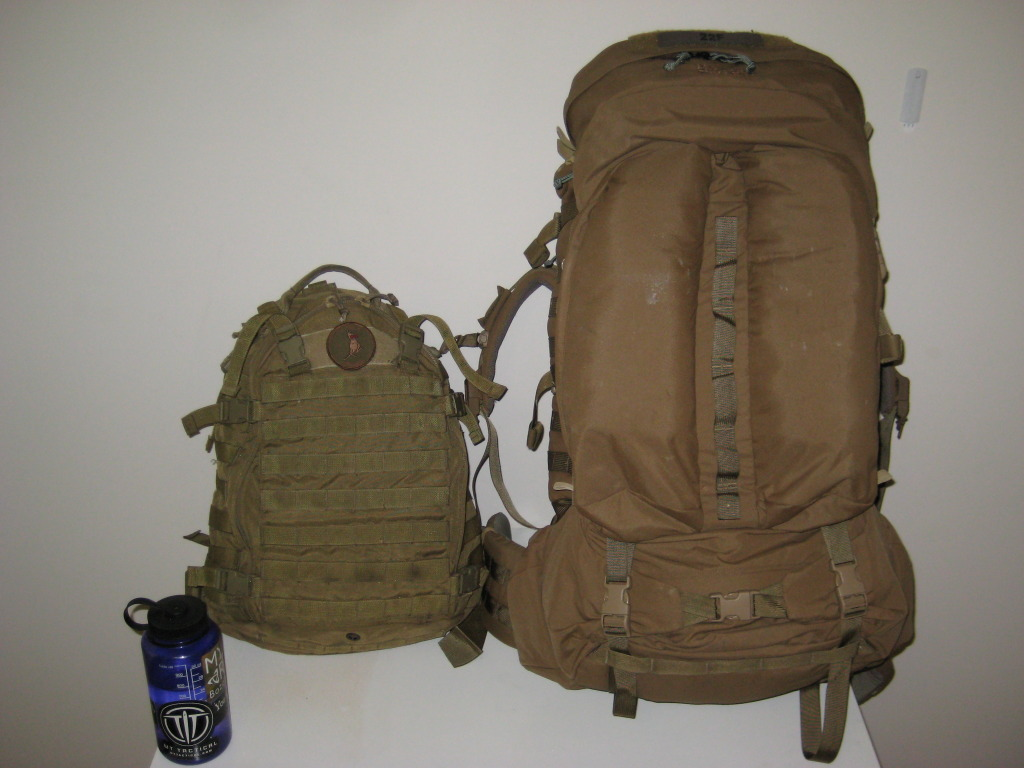

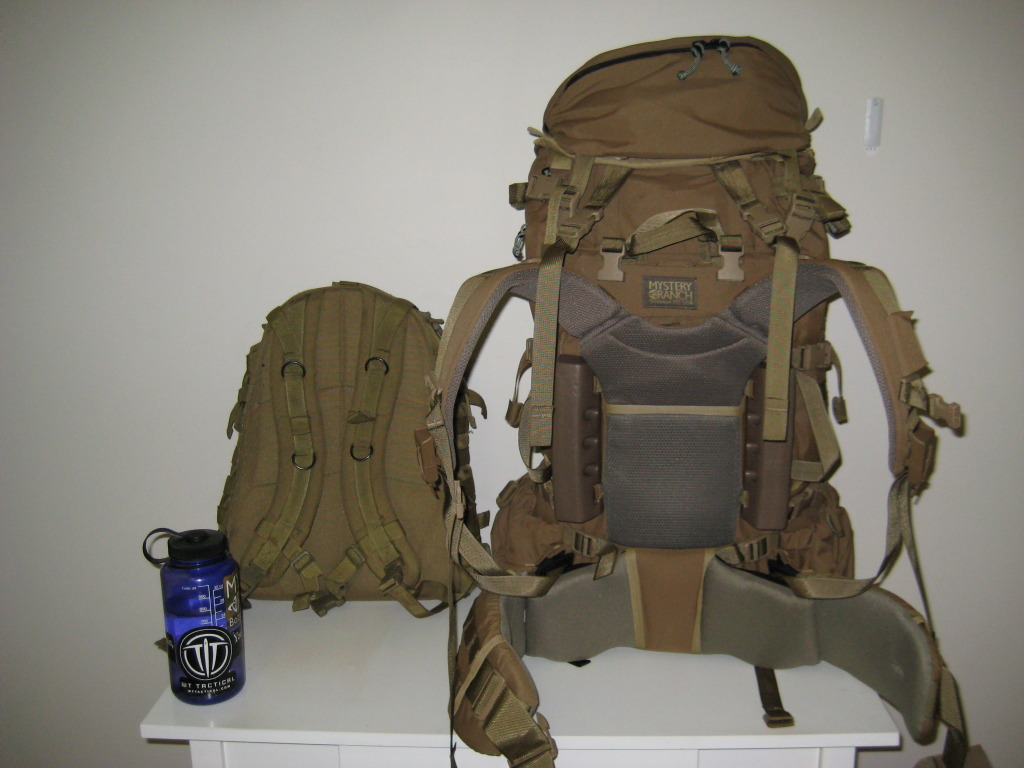
MATERIALS:
500D cordura for the main pack body.
Lockable fastex buckles
Webbing and mesh in various places
LAYOUT:
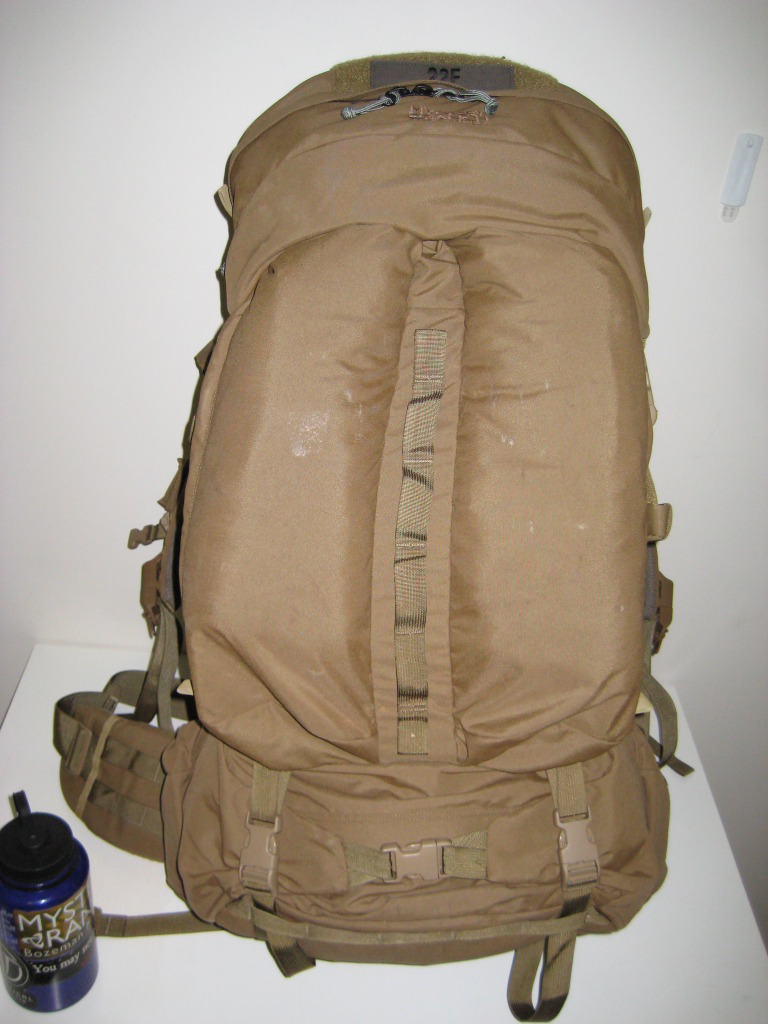

Frame and Harness –
This pack uses the Mystery Ranch NICE Frame. It’s a hybrid internal and external frame. Test wearing has shown the NICE system is very comfortable against the body.
This NICE frame is fitted with BVS for integration with body armour.
For a full assessment of the NICE frame, please refer to my review here:
Rucksack –
The review 6500 came with a daypack lid. The pack lid is a detachable item that can be used as a small daypack. It could conceivably be used as an Escape and Evasion bag for those moments when immediate survival items are needed. It is secured to the pack frame via lockable fastex clips at top and bottom and has a harness system tucked away in a pocket for immediate use.
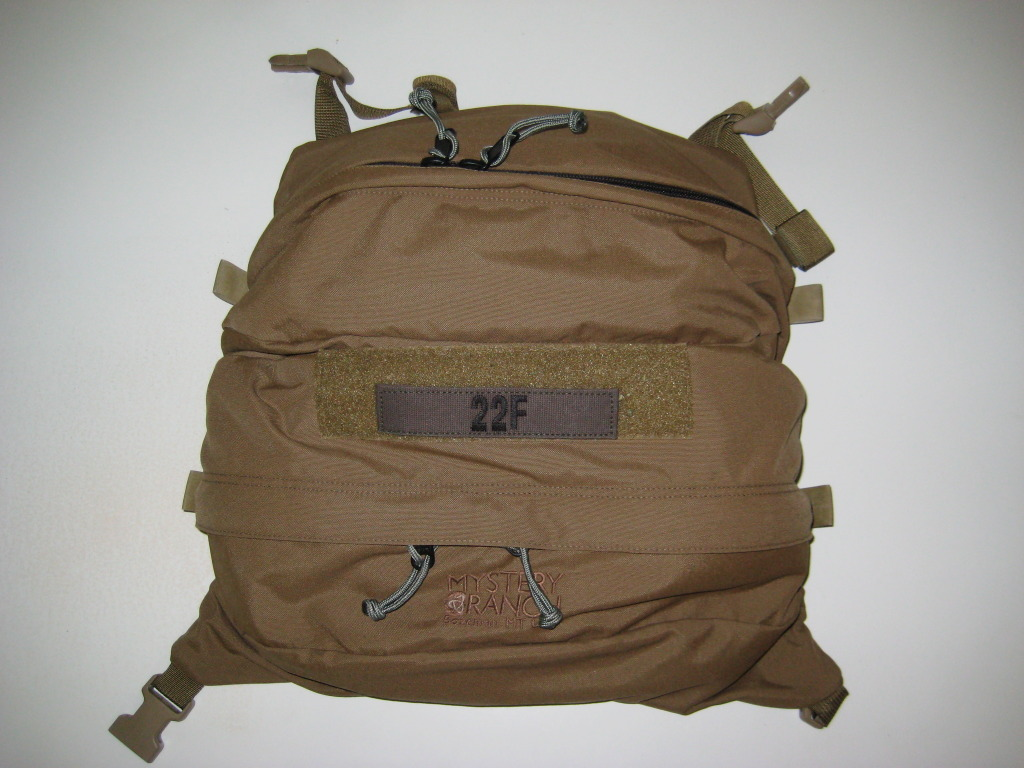
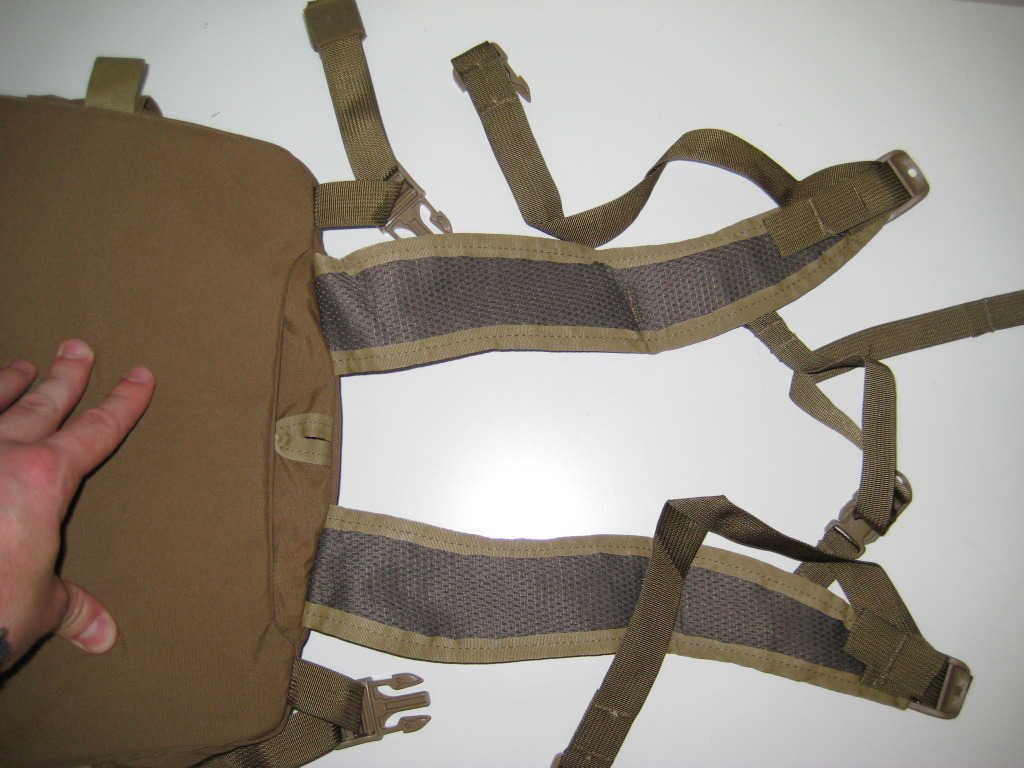
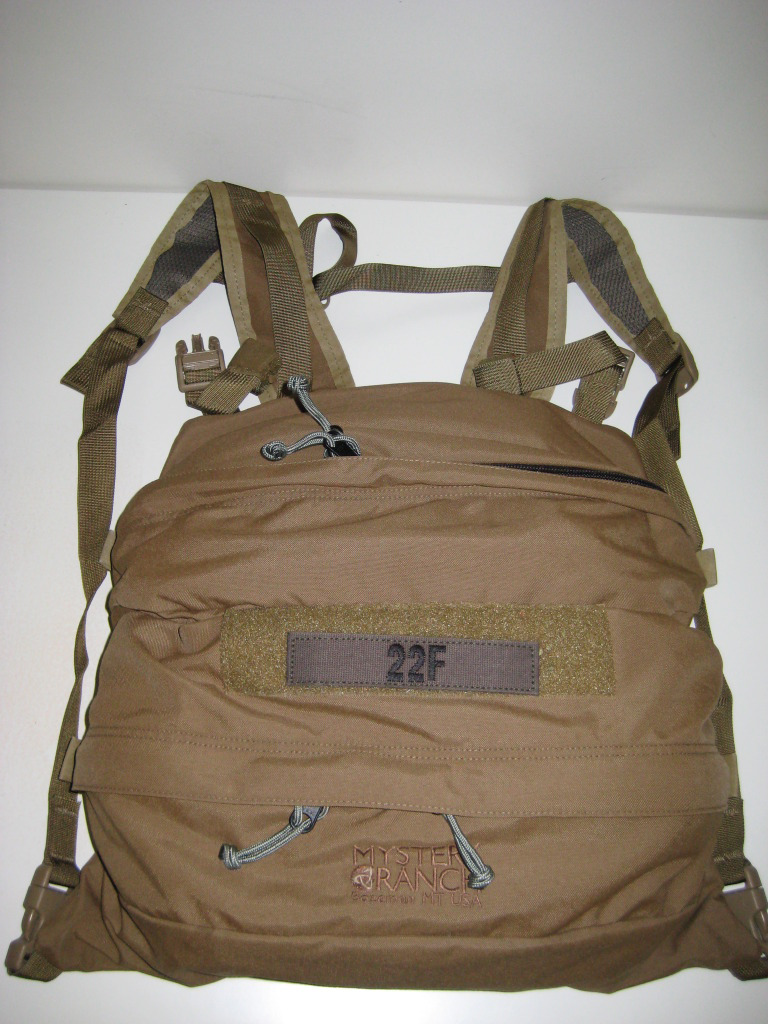
A nice design point on the fastex closure for top and bottom of the lid is the ability to undo the top portion for access to any radio controls, without having to muck around as much with the pack. A nice feature.
The top zip pocket of this lid has an access port for a hose, so this would suggest that it’s intended for storing a hydration bladder. One could easily carry a 3L bladder within it. The positioning of the pack lid is such that if a hydration bladder is fitted, that it’s in the most optimal balance point.
The main compartment is secured with a dual draw-string storm collar to seal the pack up against the elements and allow extra capacity to be packed in.
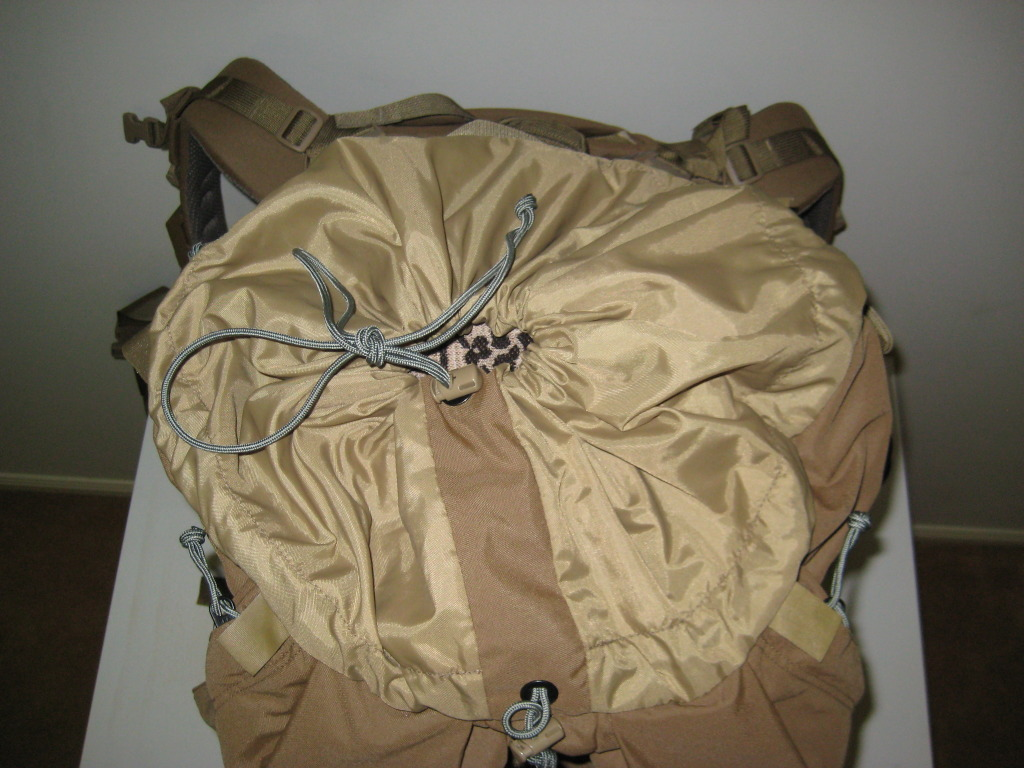
Inside the main compartment is a pocket at shoulder blade level for best balance point that can hold a manpack radio.
The sleeping bag compartment at the bottom of the ruck has a skeletonised shelf to separate the main compartment. It’s not completely sealed off from the main compartment. The skeletonised sleeping bag shelf allows long items to be stowed within the pack. It was interesting to note that the skeletonised shelf is secured via fastex clips, and had capability to compress the bottom of the ruck if a smaller load was carried. This compressing of the bottom of the ruck allows better carriage of smaller loads.
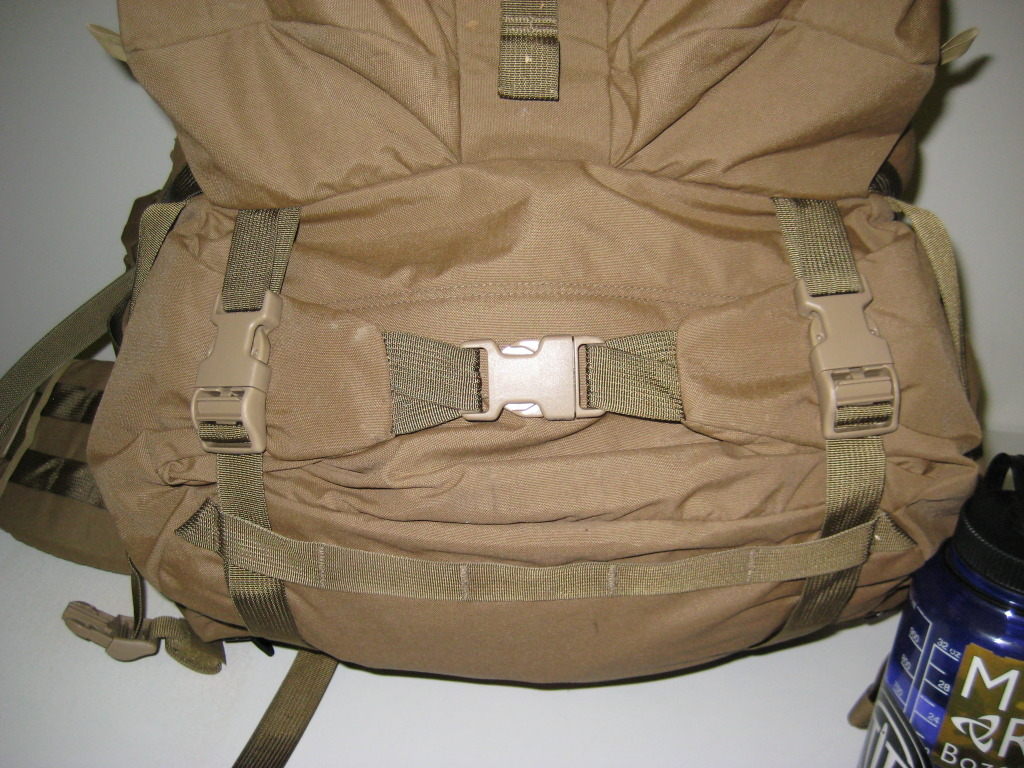


Moving to the external surface of the rucksack.
The sides of the ruck have PALS rows to attach pouches and tailor the load carried.
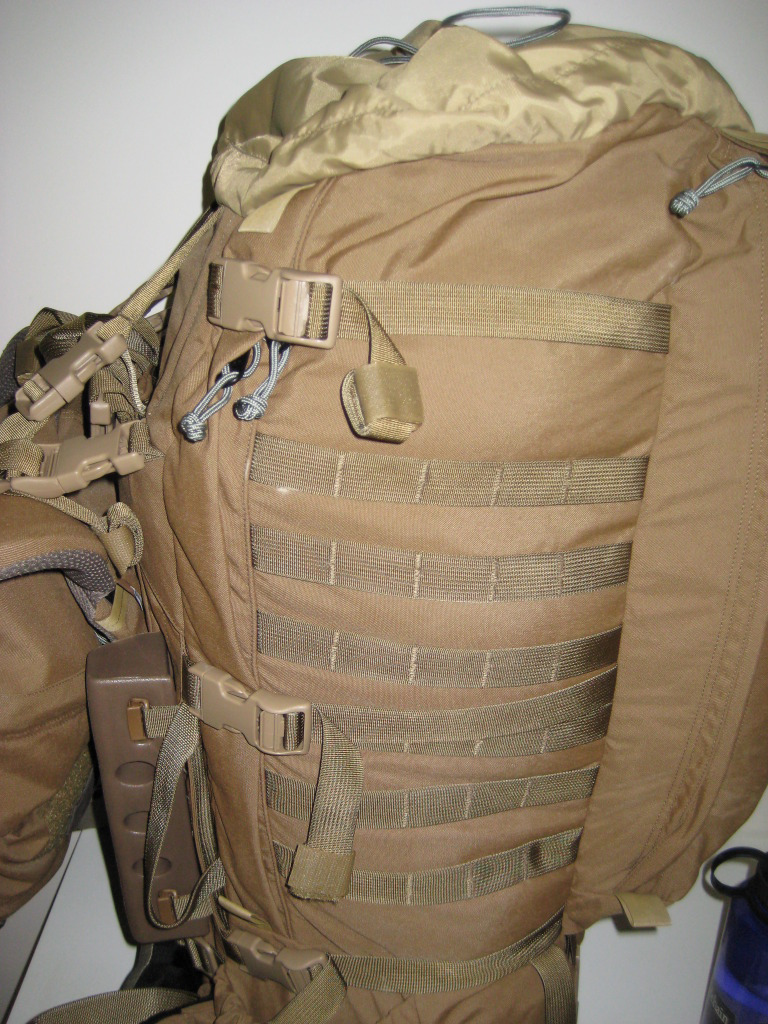
Due to the height of the 6500, there are three compression straps with lockable fastex clips to aid in securing long items to the pack and ensure the load is properly secured and not swinging in an uncontrolled manner.
The compression straps also cover side access zips that allow the wearer to access any manpack radio carried in the main body.
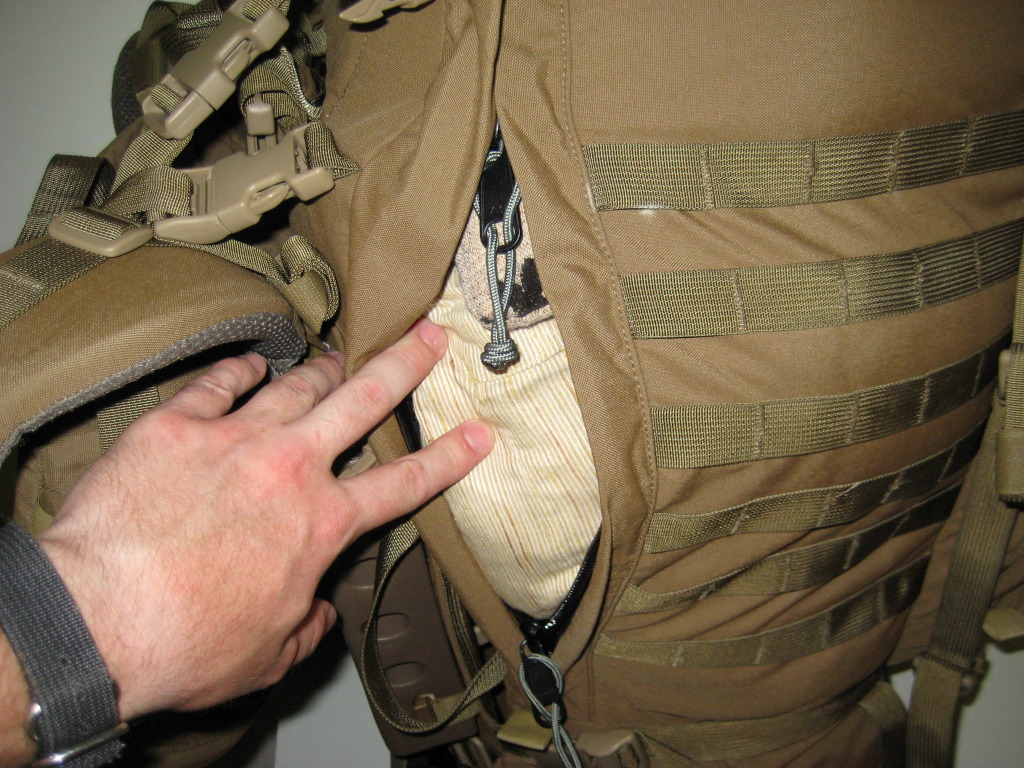
Below these PALS rows are pockets for Nalgene bottles or the stowage of long, awkward items with the aid of the compression straps.
There is also two handles on the sides of the pack to assist the carriage/lifting/handling of the pack in other scenarios than just simple wearing of the pack.
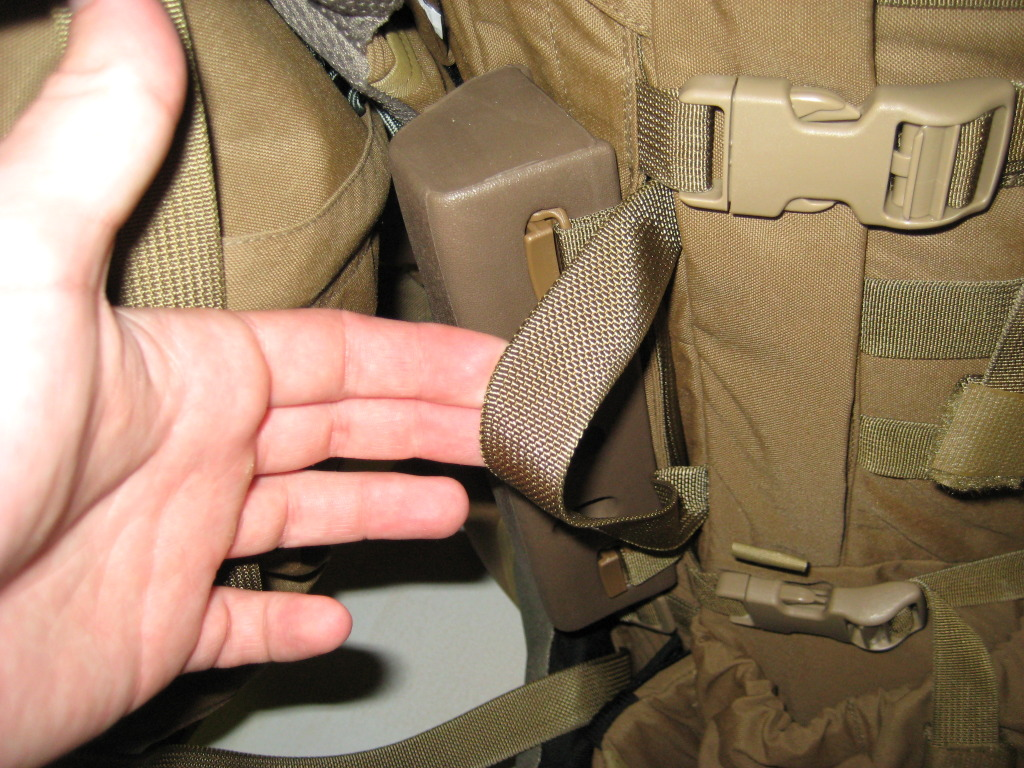
The back of the ruck has two long vertical pouches secured via zip. In between these two dorsal pouches is a length of daisy chain to aid in attaching external equipment and items.
On the bottom of the rucksack is some daisy chain to allow storage of sleeping mats and other equipment.
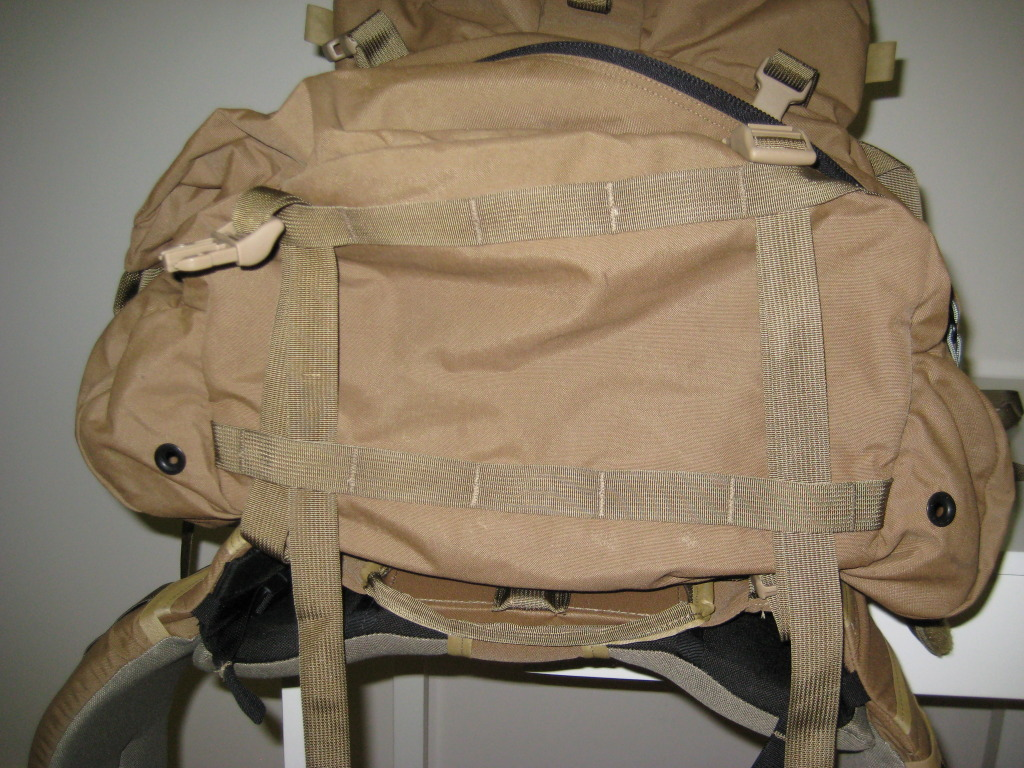
All straps have Velcro to shorten and tidy-up any loose straps, preventing snags.
PERSONAL ASSESSMENT:
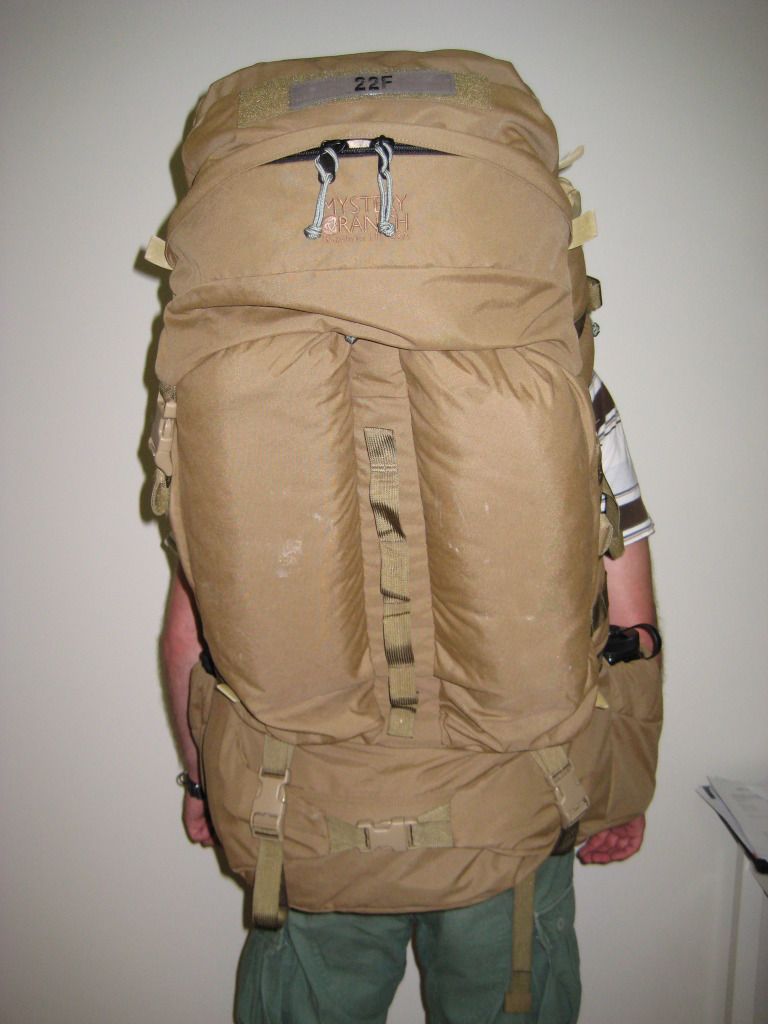
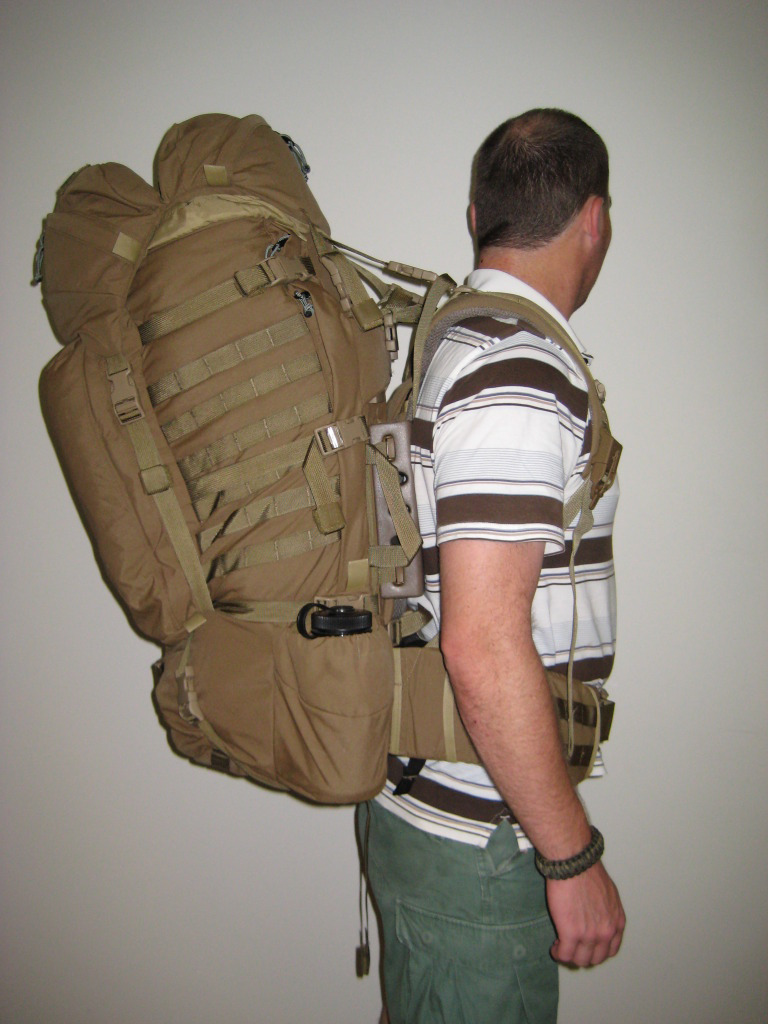
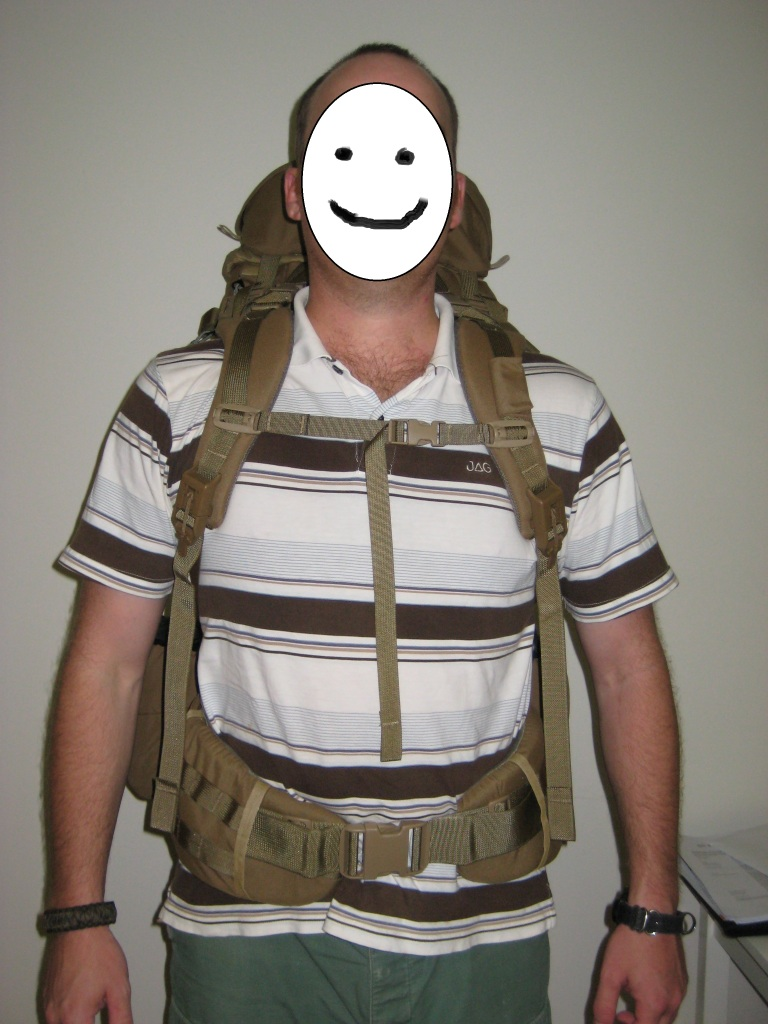
The 6500 was used recently on my latest trek along the Overland Track in Tasmania.
I was planning on carrying my Wolf Alpha for this walk, but the intended load of food, clothing and equipment in a cold alpine region was too much for that class of pack.
Thankfully, this proved an excellent opportunity to try out another item on my rather long review list under real world conditions.
Since I was left with a few more items on my floor that should have been in my pack, it was pretty easy to separate my NICE frame from the Wolf Alpha packbag, and attach the 6500 packbag in its stead.
With the 6500, I was able to carry stores and equipment for seven days in an alpine area. This included rations for seven days, a heavy weight sleeping bag, multi-fuel stove with fuel, clothing, and a Wilderness Equipment Tectite 4 tent for the team. Total load for the week was about 25 kilograms.
Using the NICE frame reinforces just how comfortable a properly setup hip-loading pack harness can be, especially since my physical preparation was less than stellar for that trip.

As a specialist pack in harsh environments, such as that found in artic and alpine areas, then the 6500 is worthy of consideration. As a general purpose pack, I think it’s a bit too large for the average punter.
How big is it? Well, fully loaded for my recent stumble across the Overland, the 6500 was way above my head. My preference is to have my pack clear my head, since it prevents me catching on low obstacles – I kept getting hung up on The Overland. In close country, I prefer something smaller.
Pros –
As per usual for a Mystery Ranch product: very high design and construction standards.
The interchangeable NICE frame and rucksacks provide excellent flexibility for adapting between different missions or tasks.
I really liked the sleeping bag compartment on this pack. Having external access to my sleeping bag and other shelter elements prevented that classic problem inherent with top loading packs: Exploding Pack Syndrome (EPS) where every item one doesn’t need has to be dragged out and re-packed. A chore that can get slightly tedious after a few days, or when time is at a premium. This is one of the few things I don’t like about my Wolf Alpha, with its single access top loading format.
Cons –
The biggest con I have found with this pack, is the placement of the top tensioners. Due to the increased height of the rucksack, to accommodate the increased volume intended to be carried, the top tensioners have the option of being attached high or low. I found the lower attachment point to not to stabilise the weight of the tall load I was carrying, and the higher attachment points didn’t seem to transfer the load as efficiently as they could have.
This lack of stability/load transfer only relevant for the taller packbag of the 6500, and not noticeable in the shorter packbags such as the Wolf Alpha. I’m still not sure whether this is my fault, due to lack of proper packing, or a point of the design itself.
I also wasn’t a real fan of the water bottle pockets at the bottom of the rucksack. I found them good for accessibility, but not for securing canteens. This was especially noticeable since I store my brew mug and shaving mug on the bottom of my Nalgene water bottles, which allows the bottle itself to slip out of the pocket far easier.
SUMMARY:
As an expeditionary pack for long range trips, or when forced to carry large amounts of equipment due to forced SOP’s, then I would consider the Mystery Ranch 6500 is a very good option.
I would not consider the 6500 as a good option as a general purpose combat pack due to its size – it’s simply too much pack for average, general purpose usage.
Posted in Civilian, Long Range, Military, Mystery Ranch, Packs & Webbing by 22F with 4 comments.
Leave a Reply